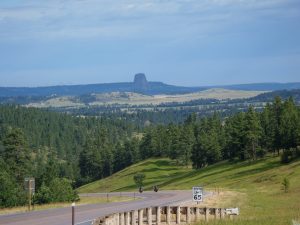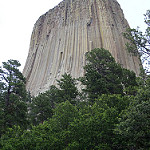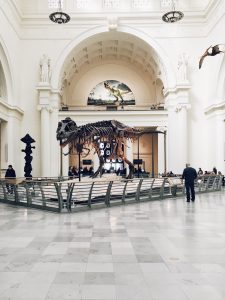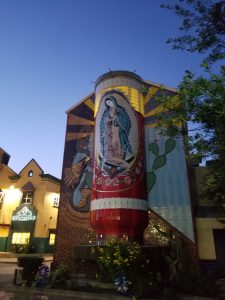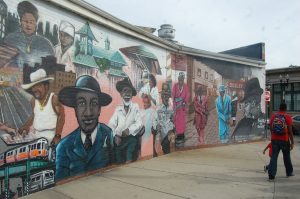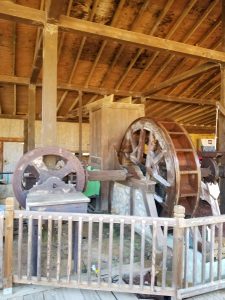
There is a place where you can walk among history, or at least a facsimile of it. A place where you can see a Gutenberg printing press in use, or see how people long ago turned wool into yarn. Blacksmiths and glass blowers work their crafts just down the path from the weapons master holding school for both young and old. Musicians playing timeless music can be heard about the grounds as barkers alert you to the start of a comedy show or a Shakespeare reciting Nubian who is about to perform. Weapons, armor, and clothing of all kinds are on display for admiring or purchase. Chandlers and soap makers display their products next to shops selling foods from all over the world. This is the world of the Texas Renaissance Festival. Part carnival, part living history, part street market, and part party the Texas Renaissance Festival, or Ren Fest to its fans, is considered by many to be the top Renaissance Festival in the country. Although it was created for entertainment purposes, there are educational opportunities when you walk through the gate. I have been to Ren Fest many times, but this time I wanted to look at it as if it were a museum. Does the museum label fit, and if so how does it compare to serious collecting institutions?
History for Entertainment Purposes
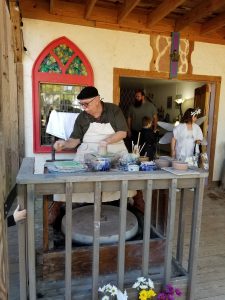
At its core the Ren Fest is an entertainment event, there is no denying that. However, just because its main purpose is to entertain does not mean there is no educational value there. A museum educates by telling the stories of the artifacts it has collected over the years. At Ren Fest the exhibits are not artifacts, but craftsmen and women who will gladly chat with you about the skills they apply to their work. There are people displaying all kinds of skills. With a short walk you can find potters, chandlers (candle makers), printers, leather workers, glass blowers, and weavers. You can see first hand how they apply their trade. For most of the day they are demonstrating how they work. They are also open to answering any questions that you have.
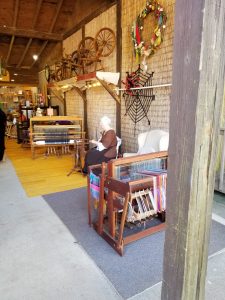
For those who are really interested they will take you step by step through the process. They are not just making these items for display. Festival goers have the chance to purchase the items they are making. This is a wonderful opportunity for anyone who is interested in these craft works. If trade crafts are not your thing there are still other things to learn. For those who are looking for something more physical the Ren Fest has something for you too.
Swords, Bells, and Bagpipes
For people who need a little more action in their learning experience, Ren Fest has you covered. Visitors can learn the art of sword fighting from the
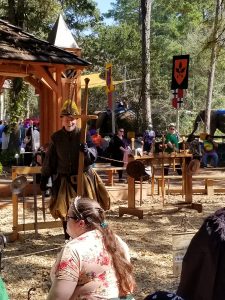
weapons master Oskar Hasslehoff. Four times a day he instructs adults and children in the class art of sword fighting. Observers can see demonstrations of a wide variety of swords. He gives lessons for everything from 2-handers to rapiers. He is a great source of historical sword fighting, often pointing out how Hollywood gets it wrong. For something less violent there are many musical acts to be enjoyed.
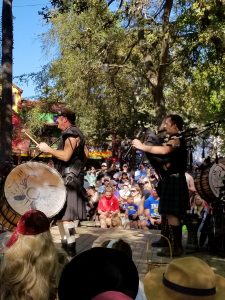
You are not going to find any rock bands or line dancing here. Lutes, drums, and bagpipes are the instruments of choice here. The music here is played in a historic style. Regulars have their favorites, but all musicians are quality acts. This is a great chance to hear music played on instruments that you might not be able to hear in a regular setting. The most unusual being the Carillon played by a performer called Cast in Bronze. Imagine a piano made of bells instead of strings. It produces a very distinct
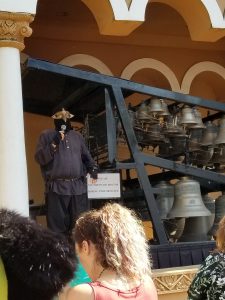
sound you won’t find anywhere else. You can also catch dancers who perform in old world styles, but these are more entertaining than educational.
A Museum or not a Museum, you be the Judge
You are not going to find a mission statement at the Texas Renaissance Fair. No big idea will be disseminated on exhibit labels hanging next to well preserved artifacts. What you will find is a chance to immerse yourself in history, or what people believe history to be. The biggest resemblance to a museum that you will see is in the people who visit. There are people who come to be refreshed, there are people who come to learn a thing or two, and there are people who come as a family outing. Yes, it is more entertainment than history, and it’s not a place where I would come to do historical research. However, it does have the ability to inspire people to learn more or to take up a hobby they may not have known about before their trip, and isn’t that the goal of any good museum?


